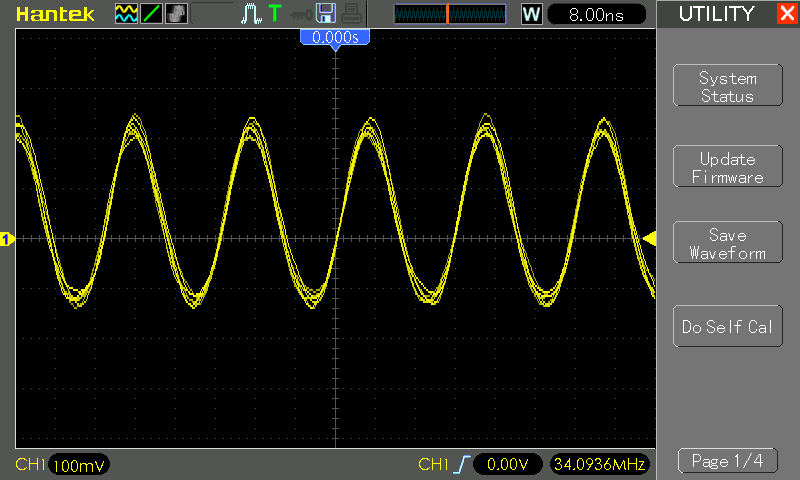As always, all notes, schematics and code are in the Little Arduino Projects repo on GitHub.
A good old LM324 does triple duty in the circuit:
- a non-inverting amplifier with a gain of ~3 provides the feedback required to sustain the oscillator
- one unit buffers a half-supply voltage to provide a "virtual ground" for the non-inverting amplifier
- a third unit buffers the output signal to avoid load interference with the oscillator
The result is a pretty decent sine wave at ~1.574kHz, very close to the theoretical resonant frequency of 1.592kHz.


















